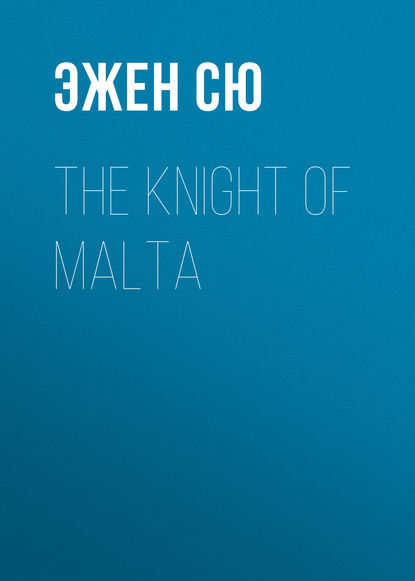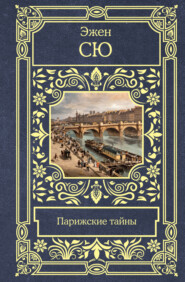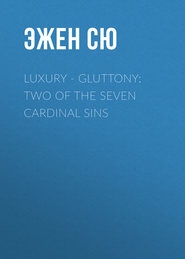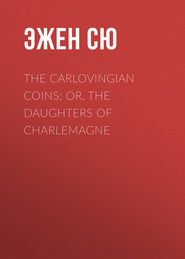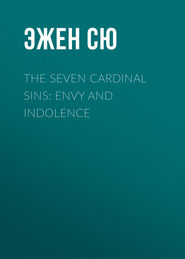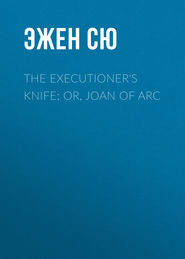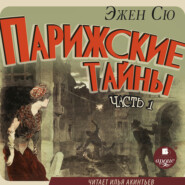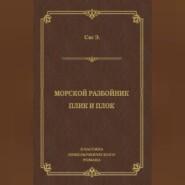По всем вопросам обращайтесь на: info@litportal.ru
(©) 2003-2025.
✖
The Knight of Malta
Настройки чтения
Размер шрифта
Высота строк
Поля
Notwithstanding the uneasiness the opinion of the watchman had given, notwithstanding the alarm caused by terror of the pirates, in every house, poor or rich, preparations were being made for the patriarchal feast.
We have spoken of the magnificent cradle which had long been in course of preparation through the untiring industry of Dame Dulceline.
It was at last finished and placed in the hall of the dais, or hall of honour in Maison-Forte.
Midnight had just sounded. The woman in charge was impatiently awaiting the return of Raimond V., his daughter, Honorât de Berrol, and other relations and guests whom the baron had invited to the ceremony.
All the family and guests had gone to La Ciotat, to be present at the midnight mass.
Abbé Mascarolus had said mass in the chapel of the castle for those who had remained at home.
We will conduct the reader to the hall of the dais, which occupied two-thirds of the long gallery which communicated with the two wings of the castle.
It was never opened except on solemn occasions.
A splendid red damask silk covered its walls. To supply the place of flowers, quite rare in that season, masses of green branches, cut from trees and arranged in boxes, hid almost entirely the ten large arched windows of this immense hall.
At one end of the hall rose a granite chimneypiece, ten feet high and heavily sculptured.
Notwithstanding the season was cold, no fire burned in this vast fireplace, but an immense pile, composed of branches of vine, beech, olive, and fir-apples, only waited the formality of custom to throw waves of light and heat into the grand and stately apartment.
Two pine-trees with long green branches ornamented with ribbons, oranges, and bunches of grapes, were set up in boxes on each side of the chimney, and formed above the mantelpiece a veritable thicket of verdure.
Six copper chandeliers with lighted yellow wax candles only partially dissipated the darkness of the immense room.
At the other end, opposite the chimney, rose the dais, resembling somewhat the canopy of a bed, with curtains, hangings, and cushions of red damask, as were, too, the mantle and gloves, a part of the equipment of office.
The red draperies covered, with their long folds, five wooden steps, which were hidden under a rich Turkey carpet.
Ordinarily the armorial chair of Raimond V. was placed on this elevation, and here enthroned, the old gentleman, as lord of the manor, administered on rare occasions justice to high and low. On Christmas Day, however, the cradle of the infant Jesus occupied this place of honour.
A table of massive oak, covered over with a rich oriental drapery, furnished the middle of the gallery.
On this table could be seen an ebony box handsomely carved, with a coat of arms on its lid. This box contained the book of accounts, a sort of record in which were written the births and all other important family events.
Armchairs and benches of carved oak, with twisted feet, completed the furniture of this hall, to which its size and severe bareness gave an imposing character.
Dame Dulceline and Abbé Mascarolus had just finished placing the cradle under the dais. This marvel was a picture in relief about three feet square at the base and three feet high. The faithful representation of the stable where the Saviour was born would have been too severe a limitation to the poetical conceptions of the good abbé.
So, instead of a stable, the holy scene was pictured under a sort of arcade sustained by two half ruined supports. In the spaces between the stones, real little stones artistically cut, were hung long garlands of natural vines and leaves, most beautifully intertwined.
A cloud of white wax seemed to envelope the upper part of the arcade. Five or six cherubs about a thumb high, modelled in wax painted a natural colour, and wearing azure wings made of the feathers of humming-birds, were here and there set in the cloud, and held a streamer of white silk, in the middle of which glittered the words, embroidered in letters of gold: Gloria in Jezcelriir.
The supports of the arcade rested on a sort of carpet of fine moss, packed so closely as to resemble green velvet, and in front of this erection was placed the cradle of the Saviour of the world; a real, miniature cradle, covered over with the richest laces. In it reposed the infant Jesus.
Kneeling by the cradle, the Virgin Mary bent over the Babe her maternal brow, the white veil of the Queen of Angels falling over her feet and hiding half of her azure coloured silk robe.
The paschal lamb, his four feet bound with a rose coloured ribbon, was laid at the foot of the cradle; behind it the kneeling ox thrust his large head, and his eyes of enamel seemed to contemplate the divine Infant.
The ass, on a more distant plane, and half hidden by the posts of the arcade, behind which it stood, also showed his meek and gentle head.
The dog seemed to cringe near the cradle, while the shepherds, clothed in coarse cassocks, and the magi kings, dressed in rich robes of brocatelle, were offering their adoration.
A fourth row of little candles, made of rose-scented wax, burned around the cradle.
An immense amount of work, and really great resources of imagination, had been necessary to perfect such an exquisite picture. For instance, the ass, which was about six thumbs in height, was covered in mouse-skin which imitated his own to perfection. The black and white ox owed his hair to an India pig of the same colour, and his short and polished black horns to the rounded nippers of an enormous beetle.
The robes of the magi kings revealed a fairy-like skill and patience, and their long white hair was really veritable hair, which Dame Dulceline had cut from her own venerable head.
As to the figures of the cherubs, the infant Jesus, and other actors in this holy scene, they had been purchased in Marseilles from one of those master wax-chandlers, who always kept assorted materials necessary in the construction of these cradles.
Doubtless it was not high art, but there was, in this little monument of a laborious and innocent piety, something as simple and as pathetic as the divine scene which they tried to reproduce with such religious conscientiousness.
The good old priest and Dame Dulceline, after having lit the last candles which surrounded the cradle, stood a moment, lost in admiration of their work.
“Never, M. Abbé,” said Dame Dulceline, “have we had such a beautiful cradle at Maison-Forte.”
“That is true, Dame Dulceline; the representation of the animals approaches nature as closely as is permitted man to approach the marvels of creation.”
“Ah, M. Abbé, why did it have to be that the accursed Bohemian, who they say is an emissary of the pirates, should give us the secret of making glass eyes for these animals?”
“What does it matter, Dame Dulceline? Perhaps some day the miscreant will learn the eternal truth. The Lord employs every arm to build his temple.”
“Pray tell me, M. Abbé, why we must put the cradle under the dais in the hall of honour. Soon it will be forty years since I began making cradles for Maison-Forte des Anbiez. My mother made them for Raimond IV., father of Raimond V., for as many years. Ah, well! I have never asked before, nor have I even asked myself why this hall was always selected for the blessed exposition.”
“Ah, you see, Dame Dulceline, there is always, at the base of our ancient religious customs, something consoling for the humble, the weak, and the suffering, and also something imposing as a lesson for the happy and the rich and the powerful of this world. This cradle, for instance, is the symbol of the birth of the divine Saviour. He was the poor child of a poor artisan, and yet some day he was to be as far above the most powerful of men as the heavens are above the earth. So you see, Dame Dulceline, upon the anniversary day of the redemption, the poor and rustic cradle of the infant Saviour takes the place of honour in the ceremonial hall of the noble baron.”
“Ah, I understand, M. Abbé, they put the infant Jesus in the place of the noble baron, to show that the lords of this world should be first to bow before the Saviour!”
“Without doubt, Dame Dulceline, in thus doing homage to the Lord through the symbol of his power, the baron preaches by example the communion and equality of men before God.”
Dame Dulceline remained silent a moment, thinking of the abbé's words, then, satisfied with his explanation, she proposed another question to him, which in her mind was more difficult of solution.
“M. Abbé,” asked she, with an embarrassed air, “you say that at the base of all ancient customs there is always a lesson; can there be one, then, in the custom of Palm Sunday, when foundling children run about the streets of Marseilles with branches of laurel adorned with fruit? For instance, last year, on Palm Sunday, – I blush to think of it even now, M. Abbé, – I was walking on the fashionable promenade of Marseilles with Master Tale-bard-Talebardon, who was not then the declared enemy of monseigneur, and, lo! one of the unfortunate little foundlings stopped right before me and the consul, and said, with a sweet voice, as he kissed our hands, ‘Good morning, mother! good morning, father!’ By St Dulceline, my patron saint, M. Abbé, I turned purple with shame, and Master Talebard-Talebardon did, too. I beg your pardon, respectfully, for alluding to the coarse jokes of Master Laramée, who accompanied us, on the subject of this poor foundling’s insult! But this Master Laramée has neither modesty nor shame. I could not help repulsing with horror this nursling of public charity, and I pinched his arm sharply, and said to him: ‘Will you be silent, you ugly little bastard?’ He felt his fault, for he began to weep, and when I complained of his indecent impudence to a grave citizen, he replied to me: ‘My good lady, such is the custom here; on Palm Sunday foundlings have the privilege of running through the streets, and saying, ‘father and mother,’ to all whom they may meet.”
“That is really the custom, Dame Dulceline,” said the abbé.
“Well, it may be the custom, M. Abbé, but is that not a very impertinent and improper custom, to permit unfortunate little children without father or mother to walk up and say ‘mother’ to honest, discreet persons like myself, for example, who prefer the peace of celibacy to the disquietudes of family? As to the morality of this custom, I pray you explain it, M. Abbé. I look for it in vain with all my eyes. I can see nothing in it but what is outrageously indecent!”
“And you are mistaken, Dame Dulceline,” said Abbé Mascarolus; “this custom is worthy of respect, and you were wrong to treat that poor child so cruelly.”
“I was wrong? That little rascal comes and calls me mother, and I permit it? Why, then, thanks to this custom, there would – ”
“Thanks to this custom,” interrupted the abbé, “thanks to the privilege that these little unfortunates have, of being able to say, one day in the year, ‘father and mother’ to those they meet, – those dear names that they never pronounce, which, perhaps, may have never passed their lips – alas! how many there are, and I have seen them, who say these words with tears in their eyes, as they remember that, when that day is past, they cannot repeat the blessed words! And sometimes it happens, Dame Dulceline, that strangers, moved to pity by such innocence and sorrow, or being touched by the caressing words, have adopted some of these unfortunates; others have given abundant alms, because this innocent appeal for charity is almost always heard. You see, Dame Dulceline, that this custom, too, has a useful end, – a pious signification.”
The old woman bowed her head in silence, and finally replied to the good chaplain:
“You are a clever man, M. Abbé; you are right. See what it is to have knowledge! Now I repent of having repulsed the child so cruelly. Next Palm Sunday I will not fail to carry several yards of good, warm cloth, and nice linen, and this time, I promise you, I will not act the cruel stepmother with the poor children who call me mother! But if that old sot, Laramée, makes any indecent joke about me, as sure as he has eyes I will prove to him that I have claws!”
We have spoken of the magnificent cradle which had long been in course of preparation through the untiring industry of Dame Dulceline.
It was at last finished and placed in the hall of the dais, or hall of honour in Maison-Forte.
Midnight had just sounded. The woman in charge was impatiently awaiting the return of Raimond V., his daughter, Honorât de Berrol, and other relations and guests whom the baron had invited to the ceremony.
All the family and guests had gone to La Ciotat, to be present at the midnight mass.
Abbé Mascarolus had said mass in the chapel of the castle for those who had remained at home.
We will conduct the reader to the hall of the dais, which occupied two-thirds of the long gallery which communicated with the two wings of the castle.
It was never opened except on solemn occasions.
A splendid red damask silk covered its walls. To supply the place of flowers, quite rare in that season, masses of green branches, cut from trees and arranged in boxes, hid almost entirely the ten large arched windows of this immense hall.
At one end of the hall rose a granite chimneypiece, ten feet high and heavily sculptured.
Notwithstanding the season was cold, no fire burned in this vast fireplace, but an immense pile, composed of branches of vine, beech, olive, and fir-apples, only waited the formality of custom to throw waves of light and heat into the grand and stately apartment.
Two pine-trees with long green branches ornamented with ribbons, oranges, and bunches of grapes, were set up in boxes on each side of the chimney, and formed above the mantelpiece a veritable thicket of verdure.
Six copper chandeliers with lighted yellow wax candles only partially dissipated the darkness of the immense room.
At the other end, opposite the chimney, rose the dais, resembling somewhat the canopy of a bed, with curtains, hangings, and cushions of red damask, as were, too, the mantle and gloves, a part of the equipment of office.
The red draperies covered, with their long folds, five wooden steps, which were hidden under a rich Turkey carpet.
Ordinarily the armorial chair of Raimond V. was placed on this elevation, and here enthroned, the old gentleman, as lord of the manor, administered on rare occasions justice to high and low. On Christmas Day, however, the cradle of the infant Jesus occupied this place of honour.
A table of massive oak, covered over with a rich oriental drapery, furnished the middle of the gallery.
On this table could be seen an ebony box handsomely carved, with a coat of arms on its lid. This box contained the book of accounts, a sort of record in which were written the births and all other important family events.
Armchairs and benches of carved oak, with twisted feet, completed the furniture of this hall, to which its size and severe bareness gave an imposing character.
Dame Dulceline and Abbé Mascarolus had just finished placing the cradle under the dais. This marvel was a picture in relief about three feet square at the base and three feet high. The faithful representation of the stable where the Saviour was born would have been too severe a limitation to the poetical conceptions of the good abbé.
So, instead of a stable, the holy scene was pictured under a sort of arcade sustained by two half ruined supports. In the spaces between the stones, real little stones artistically cut, were hung long garlands of natural vines and leaves, most beautifully intertwined.
A cloud of white wax seemed to envelope the upper part of the arcade. Five or six cherubs about a thumb high, modelled in wax painted a natural colour, and wearing azure wings made of the feathers of humming-birds, were here and there set in the cloud, and held a streamer of white silk, in the middle of which glittered the words, embroidered in letters of gold: Gloria in Jezcelriir.
The supports of the arcade rested on a sort of carpet of fine moss, packed so closely as to resemble green velvet, and in front of this erection was placed the cradle of the Saviour of the world; a real, miniature cradle, covered over with the richest laces. In it reposed the infant Jesus.
Kneeling by the cradle, the Virgin Mary bent over the Babe her maternal brow, the white veil of the Queen of Angels falling over her feet and hiding half of her azure coloured silk robe.
The paschal lamb, his four feet bound with a rose coloured ribbon, was laid at the foot of the cradle; behind it the kneeling ox thrust his large head, and his eyes of enamel seemed to contemplate the divine Infant.
The ass, on a more distant plane, and half hidden by the posts of the arcade, behind which it stood, also showed his meek and gentle head.
The dog seemed to cringe near the cradle, while the shepherds, clothed in coarse cassocks, and the magi kings, dressed in rich robes of brocatelle, were offering their adoration.
A fourth row of little candles, made of rose-scented wax, burned around the cradle.
An immense amount of work, and really great resources of imagination, had been necessary to perfect such an exquisite picture. For instance, the ass, which was about six thumbs in height, was covered in mouse-skin which imitated his own to perfection. The black and white ox owed his hair to an India pig of the same colour, and his short and polished black horns to the rounded nippers of an enormous beetle.
The robes of the magi kings revealed a fairy-like skill and patience, and their long white hair was really veritable hair, which Dame Dulceline had cut from her own venerable head.
As to the figures of the cherubs, the infant Jesus, and other actors in this holy scene, they had been purchased in Marseilles from one of those master wax-chandlers, who always kept assorted materials necessary in the construction of these cradles.
Doubtless it was not high art, but there was, in this little monument of a laborious and innocent piety, something as simple and as pathetic as the divine scene which they tried to reproduce with such religious conscientiousness.
The good old priest and Dame Dulceline, after having lit the last candles which surrounded the cradle, stood a moment, lost in admiration of their work.
“Never, M. Abbé,” said Dame Dulceline, “have we had such a beautiful cradle at Maison-Forte.”
“That is true, Dame Dulceline; the representation of the animals approaches nature as closely as is permitted man to approach the marvels of creation.”
“Ah, M. Abbé, why did it have to be that the accursed Bohemian, who they say is an emissary of the pirates, should give us the secret of making glass eyes for these animals?”
“What does it matter, Dame Dulceline? Perhaps some day the miscreant will learn the eternal truth. The Lord employs every arm to build his temple.”
“Pray tell me, M. Abbé, why we must put the cradle under the dais in the hall of honour. Soon it will be forty years since I began making cradles for Maison-Forte des Anbiez. My mother made them for Raimond IV., father of Raimond V., for as many years. Ah, well! I have never asked before, nor have I even asked myself why this hall was always selected for the blessed exposition.”
“Ah, you see, Dame Dulceline, there is always, at the base of our ancient religious customs, something consoling for the humble, the weak, and the suffering, and also something imposing as a lesson for the happy and the rich and the powerful of this world. This cradle, for instance, is the symbol of the birth of the divine Saviour. He was the poor child of a poor artisan, and yet some day he was to be as far above the most powerful of men as the heavens are above the earth. So you see, Dame Dulceline, upon the anniversary day of the redemption, the poor and rustic cradle of the infant Saviour takes the place of honour in the ceremonial hall of the noble baron.”
“Ah, I understand, M. Abbé, they put the infant Jesus in the place of the noble baron, to show that the lords of this world should be first to bow before the Saviour!”
“Without doubt, Dame Dulceline, in thus doing homage to the Lord through the symbol of his power, the baron preaches by example the communion and equality of men before God.”
Dame Dulceline remained silent a moment, thinking of the abbé's words, then, satisfied with his explanation, she proposed another question to him, which in her mind was more difficult of solution.
“M. Abbé,” asked she, with an embarrassed air, “you say that at the base of all ancient customs there is always a lesson; can there be one, then, in the custom of Palm Sunday, when foundling children run about the streets of Marseilles with branches of laurel adorned with fruit? For instance, last year, on Palm Sunday, – I blush to think of it even now, M. Abbé, – I was walking on the fashionable promenade of Marseilles with Master Tale-bard-Talebardon, who was not then the declared enemy of monseigneur, and, lo! one of the unfortunate little foundlings stopped right before me and the consul, and said, with a sweet voice, as he kissed our hands, ‘Good morning, mother! good morning, father!’ By St Dulceline, my patron saint, M. Abbé, I turned purple with shame, and Master Talebard-Talebardon did, too. I beg your pardon, respectfully, for alluding to the coarse jokes of Master Laramée, who accompanied us, on the subject of this poor foundling’s insult! But this Master Laramée has neither modesty nor shame. I could not help repulsing with horror this nursling of public charity, and I pinched his arm sharply, and said to him: ‘Will you be silent, you ugly little bastard?’ He felt his fault, for he began to weep, and when I complained of his indecent impudence to a grave citizen, he replied to me: ‘My good lady, such is the custom here; on Palm Sunday foundlings have the privilege of running through the streets, and saying, ‘father and mother,’ to all whom they may meet.”
“That is really the custom, Dame Dulceline,” said the abbé.
“Well, it may be the custom, M. Abbé, but is that not a very impertinent and improper custom, to permit unfortunate little children without father or mother to walk up and say ‘mother’ to honest, discreet persons like myself, for example, who prefer the peace of celibacy to the disquietudes of family? As to the morality of this custom, I pray you explain it, M. Abbé. I look for it in vain with all my eyes. I can see nothing in it but what is outrageously indecent!”
“And you are mistaken, Dame Dulceline,” said Abbé Mascarolus; “this custom is worthy of respect, and you were wrong to treat that poor child so cruelly.”
“I was wrong? That little rascal comes and calls me mother, and I permit it? Why, then, thanks to this custom, there would – ”
“Thanks to this custom,” interrupted the abbé, “thanks to the privilege that these little unfortunates have, of being able to say, one day in the year, ‘father and mother’ to those they meet, – those dear names that they never pronounce, which, perhaps, may have never passed their lips – alas! how many there are, and I have seen them, who say these words with tears in their eyes, as they remember that, when that day is past, they cannot repeat the blessed words! And sometimes it happens, Dame Dulceline, that strangers, moved to pity by such innocence and sorrow, or being touched by the caressing words, have adopted some of these unfortunates; others have given abundant alms, because this innocent appeal for charity is almost always heard. You see, Dame Dulceline, that this custom, too, has a useful end, – a pious signification.”
The old woman bowed her head in silence, and finally replied to the good chaplain:
“You are a clever man, M. Abbé; you are right. See what it is to have knowledge! Now I repent of having repulsed the child so cruelly. Next Palm Sunday I will not fail to carry several yards of good, warm cloth, and nice linen, and this time, I promise you, I will not act the cruel stepmother with the poor children who call me mother! But if that old sot, Laramée, makes any indecent joke about me, as sure as he has eyes I will prove to him that I have claws!”





